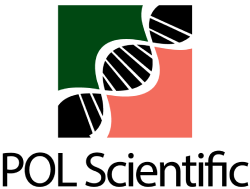Getting two birds with one stone: Combining immunohistochemistry and Azan staining in animal morphology

Classical histological stained sections have the disadvantage that fine structures, like individual neurites, or specific macromolecules, like neurotransmitters cannot be visualized. Due to its highly specific staining of only one target molecule within the cell, the visualization of delicate structures, which would be superimposed by other tissue layers in classical Azan staining, is possible with immunohistochemistry. However, using immunohistological methods not all tissues of a specimen can be visualized at once. In contrast, density specific stains like Azan allow for a whole staining of the tissues. We provide a step by step protocol of how to combine immunohistochemistry and Azan staining in the same serial paraffin sections. The combination of both methods allows for a highly detailed investigation of structures of interest. The spatial detection of the previous, to Azan staining, gained antibody-labeled signal allows for a much better understanding of animal organ systems. By using serial sections, it is possible to create an aligned image stack that is both Azan stained and also antibody-labeled. Thus enabling a correlative approach that bridges traditional histology with immunohistochemistry in animal morphology.
1. Mulisch M. Welsch U. Romeis-Mikroskopische Technik. 18th ed. Springer Verlag. Berlin. 2015. 551 p.
2. McIntosh WC. A monograph of the British annelids. London, The Ray society. 1910
3. Hanström B. Das zentrale und periphere Nervensystem des Kopflappens einiger Polychäten. Zeitschrift für Morphologie und Ökologie der Tiere. 1927;7:543–96. https://doi.org/10.1007/BF00540532.
4. Gustafson G. Anatomische Studien über die Polychäten-Familien Amphinomidae und Euphrosynidae. Zool Bidr fran Uppsala 1930;12:305–471.
5. Orrhage L. Über die Anatomie des zentralen Nervensystemes der sedentären Polychaeten. Ark Zool. 1966;19:99–133.
6. Orrhage L. Ueber die anatomie, histologie und verwandtschaft der Apistobranchidae (Polychaeta Sedentaria) nebst Bemerkungen ueber die systematische Stellung der Archianneliden. Zoomorphology. 1974;79(1):1–45. https://doi.org/10.1007/BF00298840.
7. Orrhage L. On the Innervation and Homologues of the Cephalic Appendages of the Aphroditacea (Polychaeta). Acta Zool. 1991;72(4):233–46. https://doi.org/10.1111/j.1463-6395.1991.tb01201.x.
8. Hessling R, Müller M, Westheide W. CLSM analysis of serotonin-immunoreactive neurons in the central nervous system of Nais variabilis, Slavina appendiculata and Stylaria lacustris (Oligochaeta: naididae). Hydrobiologia. 1999;406:223–33. https://doi.org/10.1023/A:1003704705181.
9. Müller MC, Westheide W. Structure of the nervous system of Myzostoma cirriferum (Annelida) as revealed by immunohistochemistry and cLSM analyses. J Morphol. 2000 Aug;245(2):87–98. https://doi.org/10.1002/1097-4687(200008)245:2<87::AID-JMOR1>3.0.CO;2-W PMID:10906744
10. Müller MC. Polychaete nervous systems: ground pattern and variations—cLS microscopy and the importance of novel characteristics in phylogenetic analysis. Integr Comp Biol. 2006 Apr;46(2):125–33. https://doi.org/10.1093/icb/icj017 PMID:21672729
11. Heuer CM, Loesel R. Immunofluorescence analysis of the internal brain anatomy of Nereis diversicolor (Polychaeta, Annelida). Cell Tissue Res. 2008 Mar;331(3):713–24. https://doi.org/10.1007/s00441-007-0535-y PMID:18071754
12. Beckers P, Helm C, Purschke G, Worsaae K, Hutchings P, Bartolomaeus T. The central nervous system of Oweniidae (Annelida) and its implications for the structure of the ancestral annelid brain. Front Zool. 2019 Mar;16(1):6. https://doi.org/10.1186/s12983-019-0305-1 PMID:30911320

